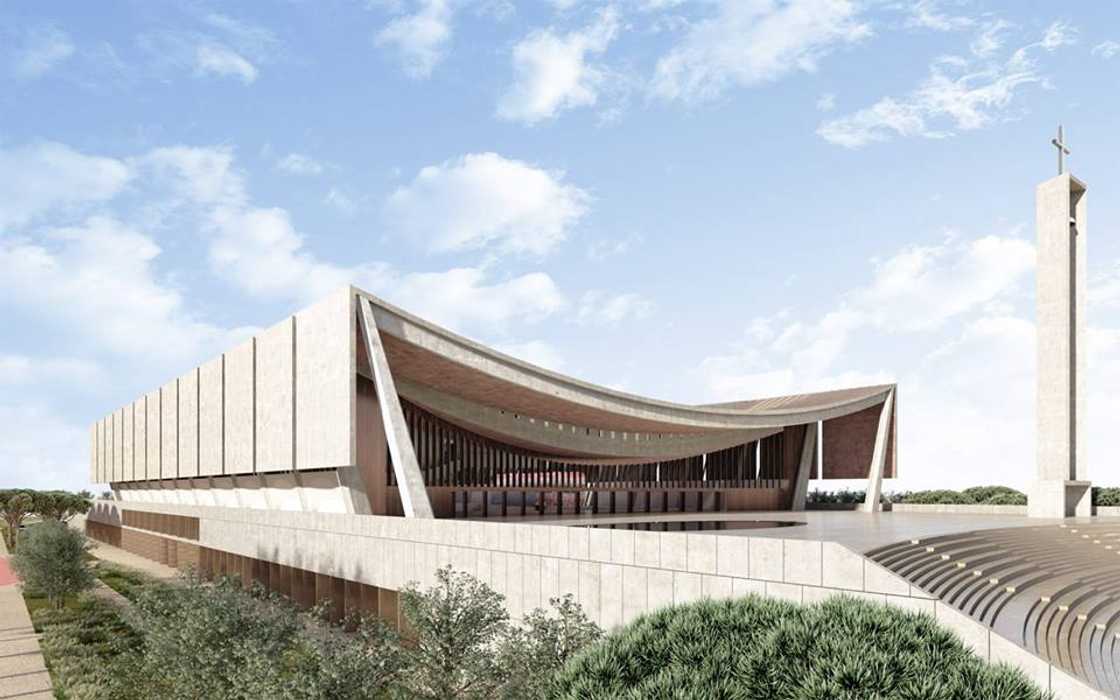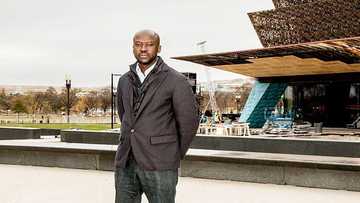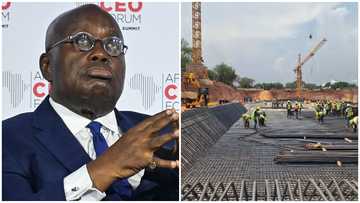National Cathedral: IMANI Africa Presents 10 Challenges With Controversial Project
- Think tank IMANI Centre for Policy and Education has listed 10 challenges with the controversial plan to build a 'National Cathedral'
- The policy brief by the think tank stays away from questions of politics and morality to make a cogent analysis of issues
- IMANI notes, for instance, that Ghana could be plunged into sectarian confusion by describing the building as a “National Cathedral”
PAY ATTENTION: Enjoy reading our stories? Join YEN.com.gh's Telegram channel for more!
Renowned think tank, IMANI Centre for Policy and Education, has listed ten challenges with the National Cathedral project in a recent analysis.

Source: UGC
The policy brief by the think tank on the controversial project stays away from fundamental questions of politics and morality.
“It does not, for instance, deliberate on the philosophical appropriateness of state funding for single-faith ventures,” IMANI said in the policy brief published on June 26, 2022.
Below are the 10 challenges the respected think tank has presented about the project:
PAY ATTENTION: Follow us on Instagram - get the most important news directly in your favourite app!
Challenge One: Value Proposition
Does yet another cathedral make a difference?
• Ghana already has 40 orthodox/traditional cathedrals
• There are also over 120 cathedral-scale Christian worship centers
• There is almost no native religion complex worthy of visit. Komfo Anokye’s hometown has been completely neglected as have the Sakumono & Korle shrines.
Given the large number of basilicas and cathedrals worldwide, can a 21st century cathedral with no history or spiritual pedigree distinguish itself? Is Ghanaian Christianity sufficiently distinctive to allow the creation of a visit-worthy site and Bible Museum?
Challenge Two: Communal Commitment
Why isn’t the Christian Community, its philanthropic allies and the Faithful taking responsibility for building an extra “cathedral” if indeed they are as supportive as the government claims they are?
From Nigeria: a Most Relevant Case Study

Read also
Minority predicts mass layoffs, further cedi depreciation, 8 other economic forecasts in 2023
• The National Ecumenical Center was started in 1989
• Christian denominations were responsible for finding the money.
• In 2004, Christians woke up to their responsibility and raised 3 billion Naira, which was then a reasonable $23 million to complete it by 2005.
• The Nigerian President, Olusegun Obasanjo, merely served as Treasurer for the project. He did not pump public funds into the construction. He relied on his personal goodwill to mobilise private donations.
Challenge Three: Conceptual Confusion
Even before construction reached ground level, costs had ballooned from $100 million to $400 million.
This is a clear and incontrovertible sign that the project was poorly designed from the start and the very concept mired in sheer confusion.
Challenge Four: Financial Opacity
From an initial estimate of $100 million, the financial commitment climbed to $190 million, then $250 million. Late last year, it was said to be $350 million. And now, according to the General Counsel of the lead contractor, it is $400 million. None of the justifications for these estimate revisions have been shared with the public though public funds are being used.
Challenge Five: Flagrant Disregard for Law
Decision to sole-source the project to Adjaye despite the clear conditions and thresholds laid out in the procurement law for sole-sourcing not met.
Committing the nation in contracts to spend far more than was expressly approved by the procurement authorities.
Refusing to openly disclose spending plans in the budget so that funds can be appropriated for the project in a way that would ensure scrutiny by the legislative branch.
Failing to disclose the full set of financial commitments, disbursements and liabilities to Parliament despite several budget cycles since project inception. Leading to strong suspicions of underhand spending, crooked dealings and corruption-related conduct.
Decision to engage architects and contractors not yet in good standing with the appropriate regulatory authorities in the construction and architectural industry in Ghana.
Actions and duties reserved for the Board of Directors of the National Cathedral under Ghanaian law have been appropriated by the Presidency.
Challenge Six: Potential for Interfaith Discord
Introducing Sectarian Confusion by describing the building as a “National Cathedral” and making erroneous comparisons with other “national cathedrals” elsewhere.
The so-called Washington National Cathedral is NOT “America’s National Cathedral”. It is an Episcopalian cathedral known as the Cathedral of St. Paul and Peter. It was built through private donations at the cost of $65 million. Not a penny from the state goes into maintaining it.
The plan to hold civic ceremonies in the planned Ghanaian “National Cathedral” suggests a privileging of Christianity over other faiths that can in time undermine the positive interfaith relations being experienced presently.
$790 Million (cost of restoration) – Entirely Private
France: Notre Dame – it is a Catholic cathedral not a republican monument. It only served as a national site for civic ceremonies when Catholicism was the state religion and personal faith of the monarch.
Challenge Seven: Categorical Confusion
“Cathedral” is a technical term.
Churches with an episcopal hierarchy build cathedrals.
It is NOT a generic Christian term.
A cathedral is the SEAT OF A BISHOP
Ghana has no “National Bishop”.
There is NO established church so there cannot be a “National Cathedral”.
Hence why in Nigeria, they called theirs a “National Christian Center” and previously “National Ecumenical Center”.
Government’s incorporation of an “interdenominational church” through the Museum’s Board confuses an already messy situation. At most, a “chaplaincy” model as used in Ghanaian universities, hospitals and the armed forces should have been adopted. The building itself should have been owned by a statutory body and operated by a chaplaincy system established by the Christian churches.
Incompetent fee scheduling has taken away the incentives of the design and build consultants and contractors to ensure sound project management. The project is now wracked by internal confusion among key project operators at the design and execution levels. Adjaye took as much as $6 million even before a basic alignment between the architects and the builders.
Challenge Eight: Massive Upfront Payment
Adjaye has been paid at a rate that is at least three times what the local regulators of the profession suggest to be reasonable and four times the median rate in the UK where he principally practices.
Challenge Nine: Inflated Architectural and Design Cost
Given his 20-year industry record, it is noteworthy that Ghanaian public institutions will, since 2018, suddenly start awarding large contracts to Adjaye without any design competitions or even basic tenders taking place.
Challenge Ten: Preposterous Cost-Benefit Analysis
The government has entered into secret pacts with the Museum of the Bible (MOTB), Nehemiah Group, and Cary Summers (all linked to the Green Organisation in the US) for assistance in developing Christian tourism around the National Cathedral. The experience of these individuals and organizations in their own backyard and operations proves that “bible museums” are extremely hard to run and fully cover costs.
In MOTB’s desperation, it has had to grapple with artifact fraud and antiquities trafficking. Fundraising strategies developed for the Ghanaian “National Cathedral” have so far failed spectacularly. Museum of the Bible (Washington DC), part of the bevy of international Christian tourism advisors to the National Cathedral, has faced lawsuits for antiquities fraud and smuggling and has come under state investigations.
National Cathedral: Priority of Priorities Or Another Easy Way To Waste Scarce State Money?
YEN.com.gh has published in a separate story that a leaked document revealing a directive by the finance minister to the Controller and Accountant-General’s Department for the release of GHS25 million of taxpayers’ money to contractors as seed capital for the National Cathedral project triggered a renewed resistance.
The controversy generated by the leaked document and the subsequent release of the money has been premised on the views of the civil society and a section of the Ghanaian public that the government has said in the past that the Cathedral will not be funded with state cash.
The other source of agitation is that times are really hard for Ghana. Rising inflation, dangerous depreciation of the local currency, and general hardships, partly caused by global economic challenges, make the project, which is merely an optics for piety in God, poorly timed. Civil society is also concerned about financial indiscipline and the possibility of graft that plagues such projects.
New feature: Сheck out news that is picked for YOU ➡️ find “Recommended for you” block on the home page and enjoy!
Source: YEN.com.gh








